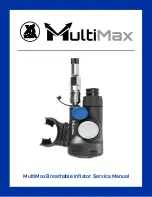
GUI reference
R&S
®
ZNB/ZNBT
697
User Manual 1173.9163.02 ─ 62
Emphasis
The "Emphasis" dialog allows you to introduce a pre-emphasis filter to the digital signal
simulated for the eye diagram measurement. "Emphasis" and
used to compensate for the signal integrity degradations caused by the DUT.
Access:
This dialog is available with
ZNB/ZNBT-
K20 only.
In transmission systems known losses of the channel are typically compensated
already in the transmitter. The most common setting is to boost high frequencies com-
pared to low frequencies since the channels show typically larger losses for high fre-
quencies.
This type of equalization is done using finite impulse response (FIR) filters using
between 2 and 4 taps. The filter’s sampling time is identical to bit period.
The coefficients of the FIR filter are not provided directly but in terms of pre- and post-
cursor values. The cursor value is defined as voltage ratio of two adjoining bits. Since
up to four taps can be used, the bit pattern for defining all cursor values must use four
consecutive bit values. Here a repeating bit pattern 0 1 1 1 1 0 is used. By definition
the voltage levels for encoding the bits are symmetrical using +V for the ones and -V
for the zeros.
In the graphic below the blue and the red trace indicate the signals used for differential
encoding on a symmetric line. Va indicates the level directly after a transition, Vd indi-
cates the level before a transition, Vb and Vc are optionally used to specify further lev-
els after the transition.
0
1
1
1 1 0
...
...
Va Vb Vc Vd
In dB the pre- and post cursors are defined as:
●
Pre Cursor = 20 log
10
( Vd / Vc )
Applic softtool
















































